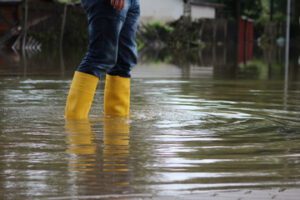Whenever we hear the term flooding we think of floods as overflowing water. But a flood can also mean water flowing over land. It is important to understand this because flooding is a major concern in many fields, including agriculture, civil engineering, and public health.

Increasing urban flooding poses a major challenge to urban planners. It is caused by the lack of proper drainage in urban areas. Typically, this occurs after a prolonged period of heavy rainfall. When this occurs, water flows into streets, causing health and property damage. It can also disrupt daily life in the city.
Urban flooding can also occur in coastal areas. Coastal flooding can be exacerbated by strong winds and relative sea-level rises. In addition, urban areas have paved surfaces, which increase the speed of the water running off the ground surface. This can also lead to greater loss when buildings and structures are inundated.
The traditional assessment of economic losses from floods considers direct damages to buildings, contents, and infrastructure. But the impact of urban flooding can also include disruptions to the public and private transport, business, and schools.
Urban flooding also leads to the deterioration of water quality and civic amenities, including water supplies and sewage systems. It also causes disruptions to supply chains, which affects productivity. It is estimated that 1.7 million properties in the United States will be at risk of urban flooding.
As part of the Flood and Coastal Defence Foresight project, researchers identified drivers of future flood risk. They categorized them into fluvial/coastal, intra-urban, and socio-economic drivers. The study also re-evaluated the drivers of change, the scientific advances that led to these changes, and the direction of change.
The study outlined four pre-existing scenarios: one scenario aimed to project flooding in the 2050s and 2080s, while others reflected different values held by society.
Unlike flash floods, slow-rising floods usually develop slowly. They can last for weeks or months before they recede. These floods are most common in large rivers with large catchment areas. They are caused by sustained rainfall and rapid snowmelt.
Floods are extreme weather events and can affect many people, depending on the severity. They are also very local. They can affect buildings and other structures, as well as people and animals. They can also damage power transmission and drinking water treatment facilities. If you are in a low-lying area, prepare yourself by leaving for higher ground as soon as you hear a flood warning.
Flooding can also damage transport infrastructure, making it difficult to move people and supplies. It can also contaminate the water supply, increasing the risk of waterborne diseases. During floods, people should avoid using electrical appliances and sewage disposal facilities.
Floods can be large, with many people trapped in their homes. They can also happen locally and can be triggered by a single thunderstorm or a large cyclone. These floods have several benefits, such as spreading nutrients to lakes and recharging groundwater. They can also help to improve fisheries for several years.
Slow-rising floods are caused by mesoscale convective systems (MCSs). These systems are large storms that produce high-intensity rainfall. They are associated with floods, as well as hybrid floods. They are also associated with the development of a small impoundment, which is typically associated with a heavy flow.
Floods can cause significant damage to people and animals. They can also disrupt power transmission, sewage disposal facilities, and transportation. They can also cause civil unrest. In some cases, water contamination can lead to life-threatening diseases, such as diarrhea.
Generally, flash floods are the result of heavy rainfall that overwhelms the ground’s absorption capacity. When that occurs, water builds up to overflow normally dry creeks and streams. In addition, debris flow can contribute to flash flooding.
If you live in a flood-prone area, make sure you are prepared to take action. Check with local authorities to learn how to prepare. Stock up on supplies such as lumber, plywood, and plastic sheeting. You may also want to sign up for the National Flood Insurance Program.